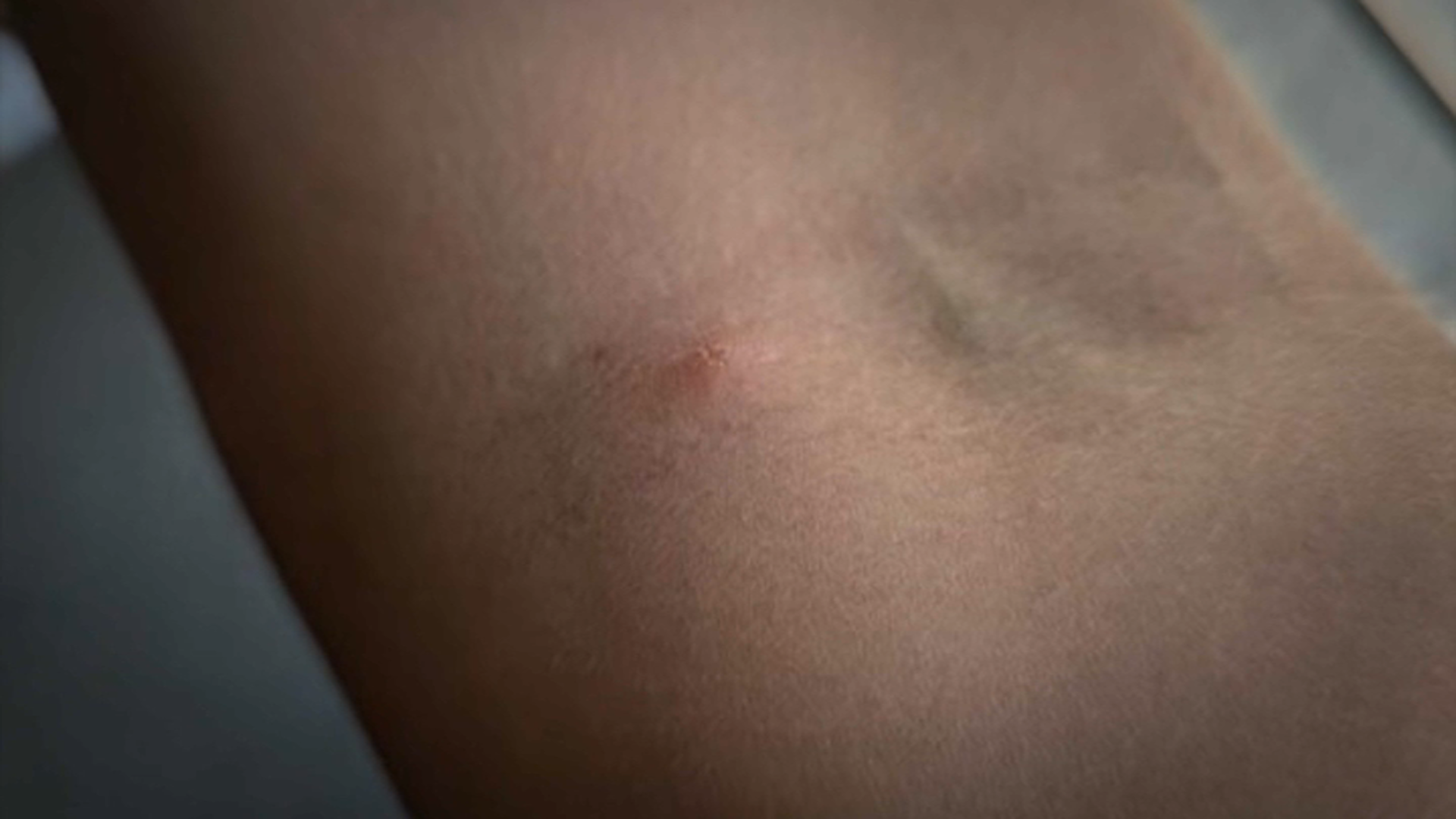Have you noticed a rise in what appear to be ladybugs in your home lately? You're not alone.
They likely aren't actually the ladybugs you're thinking of. Chances are, you're seeing an increase in what's known as an Asian lady beetle.
While they may be a nuisance, how worried should you be?
Here's a look at what you should know:
What are Asian Lady Beetles?
According to the University of Minnesota, the multicolored beetles look similar to other lady beetles, but are typically slightly larger. They are often seen in colors like orange or yellow, but can be seen in red or black, though the latter is rare.
The beetles typically have 19 black spots, though some may have fewer than that or no spots at all, and they have a "clear black 'M'-shaped marking" behind their head, the university notes.
Other names for the beetle include Halloween lady beetle and Japanese lady beetle.

Why are there so many of them right now?
Feeling out of the loop? We'll catch you up on the Chicago news you need to know. Sign up for the weekly Chicago Catch-Up newsletter.
According to Peggy Anesi, a natural resources, environment and energy educator with the University of Illinois who specializes in wildlife management, people most often notice the bugs in their house in the fall.
"Like many insects, the lady beetle starts seeking small crevices to gather in large numbers and begin diapause, the name for insect hibernation," she wrote in a blog post for the university. "They often inadvertently crawl into basements through cracks in the foundation."
She noted that the large number of such beetles can be alarming for some.
"The Asian lady beetle’s self-invitation causes my phone to ring as early as Halloween. Most people, not so much a naturalist, won’t tolerate even a single bug in the house so imagine the call when someone locates an entire yard full of lady beetles in the corner of their basement," Anesi said.
Similar, the University of Minnesota said "once lady beetles move into wall voids in the fall there is no way to prevent them from emerging later during winter or spring."
Are they harmful?
The University of Minnesota notes that the beetles "can be a nuisance when they occur in large numbers inside homes," but overall they are not harmful to humans or pets.
They don't damage property and they cannot sting, but they can bite if they are searching for moisture or food and may secrete a "strong-smelling yellowish liquid" that can stain some light-colored surfaces.
"If you disturb any lady beetle, you will be amazed at the amount of foul smell from a yellow discharge they can admit through their leg joints," Anesi said. "This is their defense mechanism that keeps other animals from wanting to snatch them up."
While the beetles are common in wooded areas and gardens, they can be beneficial as they feed on garden pests such as aphids. But if they run out of aphids to eat, they may begin looking for other food sources and land on fall fruits like grapes or apples, infesting those that have wounds or holes.
Can you prevent these beetles from infesting your home in the fall?
Experts recommend eliminating spaces where such beetles can enter your home, though it can be challenging as these bugs can fit through openings as small as 1/8-inch.
The timeline for sealing up openings would be before the end of September, according to the University of Minnesota.
Here are some of their recommendations:
- Check the outside of your home for spaces and cracks that may allow insects easy entry.
- Lady beetles can fit through openings as small as 1/8 inch in size.
- Make any necessary repairs by the end of September.
- Seal cracks and spaces around doors, windows and fascia boards. Check for gaps and cracks where different materials meet, such as brick and wood siding. Seal cracks with caulk, such as silicone, elastomeric latex or silicone/acrylic.
- Seal areas where cable TV wires, phone lines, and other utility wires and pipes, outdoor facets, dryer vents and similar objects enter buildings.
- Seal with caulk or, for larger spaces, use polyurethane expandable spray foam, steel wool, copper mesh or another appropriate sealant.
- Repair or replace damaged window and door screens.
- Repair or replace damaged screens in roof and soffit vents, and in bathroom and kitchen fans.
- Install door sweeps or thresholds to all exterior entry doors. Install a rubber seal along the bottom of garage doors.
You could use a pesticide outside to prevent entry into your home as well, some experts say. Others say spraying pesticides is "unnecessary."

What can you do if they're already in your home?
Once inside your home, spraying pesticides for these beetles ir largely ineffective.
Experts are mixed on the preferred method for removing Asian Lady Beetles, however.
Anesia suggests sweeping the beetles out of your home "because if you vacuum up a pile of them in the winter the smell will make you change the vacuum bag before it's full."
The University of Minnesota, however, said vacuuming is a viable option, but it also notes that "lady beetles are not automatically killed when they are vacuumed" so changing the bag frequently is recommended for minimizing smell.
"You may use a knee-high nylon stocking that has been inserted into the extension hose and secured with a rubber band. As you vacuum, the lady beetles are captured in the stocking," the university suggests. "Remove the stocking after vacuuming, so the captured beetles won't escape."



